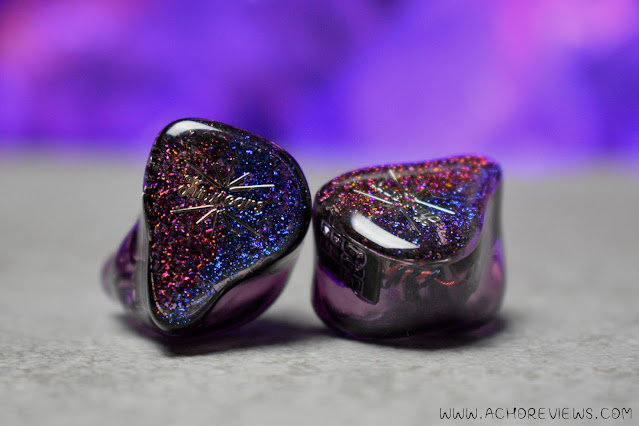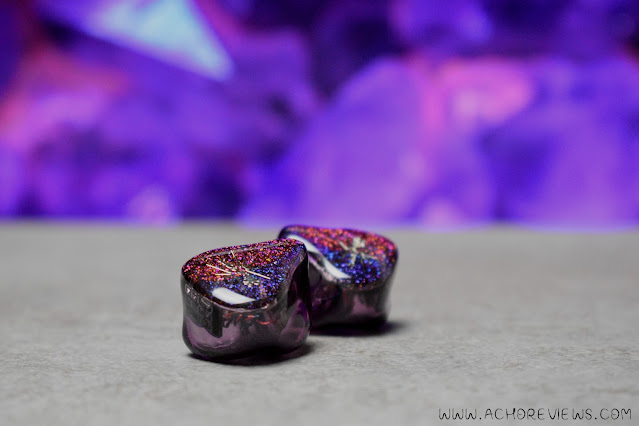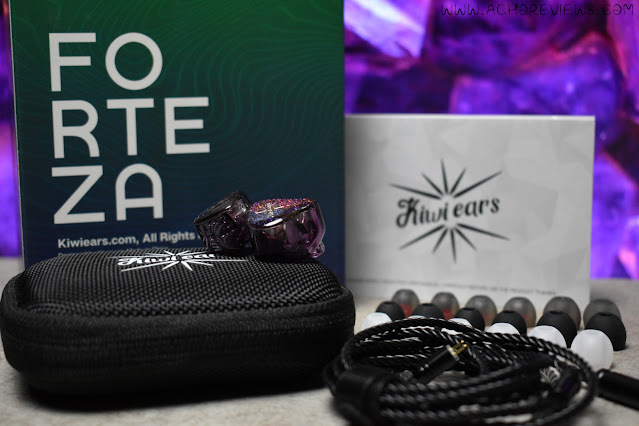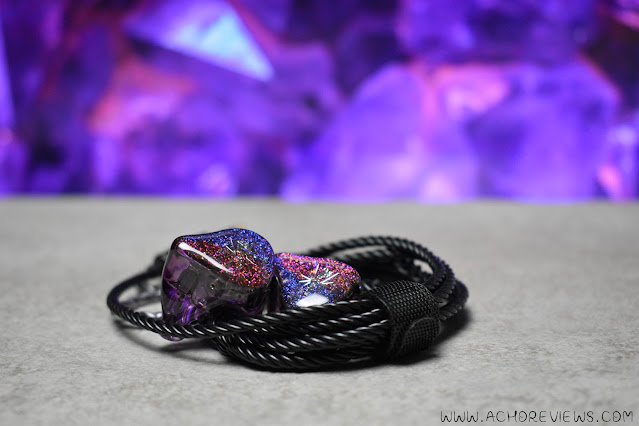- Get link
- X
- Other Apps
English | Español
TLDR version on YouTube: TDLR - Kiwi Ears Forteza
The Kiwi Ears Forteza have been sent to me by Linsoul in exchange for the publication of this review. Linsoul have not made any comments or requests and I will do my usual best to be as unbiased as possible in this review.You can find the Forteza via Linsoul here: https://www.linsoul.com/products/kiwi-ears-forteza
As always, this is a non-affiliate link.
To avoid being repetitive in my reviews, you can find all the info about how I create the reviews, equipment used, how I receive the products and how to interpret my reviews by visiting: About my reviews
Intro…
It’s no secret that I am a big fan of some of the Kiwi Ears models. The 2023 Acho Awards resulted in both the Cadenza and the Quintet being my top pick for the Sub 50€ and the Sub 500€ respectively. I also reviewed the Quartet and the Orchestra Lite last year and, while they may not have been amongst my top picks, they are still decent IEMs.
The Forteza is a new release from the brand, coming in just outside the ultra budget category at a little over 50€, that feature a dual dynamic drive paired with a single balanced armature driver. These are distributed, according to the spec, as using a DD for the bass, the other DD for the mids and the BA for the “high-mid”, which I am guessing refers to upper mids and treble.
The tuning of the Forteza is quite a bit different from previous models I have reviewed but I’ll get to that in just a moment, let’s first take a look at the overall package.
Presentation…
One look at the box identifies this as a Kiwi Ears product without a doubt. All of their boxes are very similar and in the case of the Forteza, it is even more similar than others. I say this because, to my amusement, one side of the Forteza outer sleeve claims it is a Kiwi Ears Quintet 😀 Obviously when redesigning the packaging, someone forgot to update the model name on that side.
Removing the outer sleeve reveals the usual black box with the silver Kiwi logo, inside of which we find the IEMs on the top layer and a storage case below containing the accessories.
The accessories are the case (of course), the cable, 9x sets of tips in three different types and the usual user manual. These are exactly the same contents as we got with the Orchestra Lite (although that included a little tool for changing the dip switches) and the Quartet (although the cable was different in the Quartet), so I really don’t think we can complain about the same contents at a quarter of the price point.
Build and Aesthetics…
I have to say that Kiwi make some very nice resin shells. The Quintet had a simpler aluminum faceplate but the other models have all feature a kind of swirled finish that I really am a fan of. Here, instead of the swirled design, they have opted for a two tone sparkle design that I am also very fond of. The version I have received is what the refer to as “purple”, yet I think it was designed for FC Barcelona fans as I would call it “blau-grana” (the colours of the team). While I am not one for sparkly attention seeking finished, I have to say that I do like it, it seems to be tastefully done and, while sparkly, doesn’t really demand attention.
The build and shape of the IEMs matches those of other models yet maybe the lightest of them all (I should really put them on a scale before saying that, but that’s the impression I get from memory). This means I have no issue with the fit or comfort.
The included cable is the same as the one included with the Cadenza, which is not exactly a high end cable but it does its job and I cant really complain here either. The hardware is metal and the cable itself is a simple black, so there really isn’t much to say about it.
Sound…
All tracks mentioned are clickable links that allow you to open the reference track in the streaming service of your choice (YouTube, Tidal, Qobuz, Spotify, etc.)
As I said a moment ago, the tuning of the Forteza is different to that of other Kiwi models I have tried previously. Before getting into it, let’s take a look at the graph, with my preference target as a reference and with the Cadenza as a comparison:
Starting off with the subbass, there isn’t really much more than on the Cadenza, or the Quintet for that matter, however, there is a lot more focus on the lower notes. The subbass is quite prominent to say the least. With my usual test of “Chameleon”, the track starts out quite calmly, with just a few bass hits here and there, which makes you think, this is quite calm and collected. Then the first rumbling bars come in and you start thinking, hmmm, this is quite a lot of bass. Then more bass kicks in, then some more, and suddenly you have this wall of rumble that, if it was a subwoofer, would quickly empty any shelves in the room.
While the subbass doesn’t do a bad job of keeping the pace, it is noticeable that things aren’t quite as clean as they would be with less. There were actually parts of the track where the subbass became very fatiguing for me, which is not usually the case, I am usually fatigued by midbass and not subbass.
If we switch to “Crazy” which is actually my test for mdbass fatigue, the fatigue actually goes away. This is because the upper part of the midbass actually falls away and, as the reverb of this track is located in those ranges, things seem a lot cleaner.
Heading back to something a little more electronic, such as “Shot Me Down”, the bass comes across as much cleaner with more controlled bass hits, being quite impressive in this matter. Again, this is due to the focus of the lower ranges being moved towards the lowest of notes and with tracks that don’t have a lot of rumbling subbass, this can be quite beneficial.
Moving into the midrange, there is quite a noticeable dip in the center of the mids, following that slope down that starts halfway through the midbass region and doesn’t really come back until around 1kHz. This moves the focus both towards the subbass and also the higher ranges.
The upper mids a just a little too hot for my tastes, with a slight hint of harshness on female vocals, such as Daniella Andrade, but it is above this range where things get even spicier to my ears. There is a double peak, just below 3kHz and just above 4kHz which is not quite as painful as a peak in the 5kHz range for me but is still a little harsh to my ears.
Vocals, especially female vocals, can come across as rather thin and brittle, with a bit of nasal touch to them. Depending on the specific singer and, more importantly the actual word and tone, things can be a little brutal in these ranges.
As we move into the treble, things don’t get much better I’m afraid. While I have heard other Kiwi Ears sets that use BA for the treble, or even all BA for the full range, the Forteza seems to bring some of that metallic texture that reminds me of other BA implementations from other brands in the past. The treble can again be a little thin and harsh, with a sensation of air and detail that is overshadowed by that metallic texture and overall brittleness to the higher ranges.
Conclusion…
I’m afraid that the Forteza are not joining my list of great products from Kiwi. I do think that they are great looking but unfortunately the tuning is not something that I find enjoyable. As always, everyone has their own tastes and I am just one opinion but the overall presentation of sound from these headphones reminds me of things that were coming across my desk some years ago.
They are a very nice looking set of IEMs, with a very good price point, but I feel that they are not up to the usual standard of Kiwi IEMs as far as sound and performance goes, which is a shame, as it's no secret that I am a fan of the brand.
All FR measurements of IEMs can be viewed and compared on achoreviews.squig.link
All isolation measurements of IEMs can be found on achoreviews.squig.link/isolation
To comment or contact, visit any of the following social media platforms:





.png)

